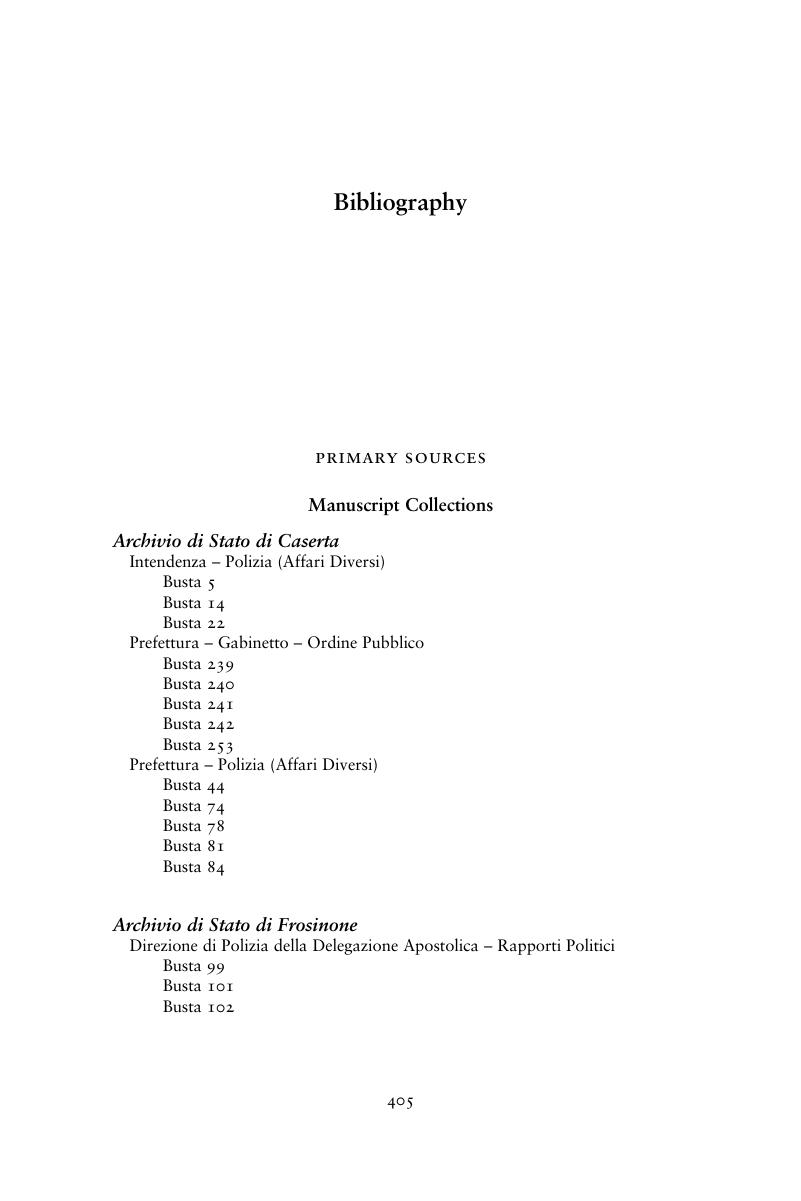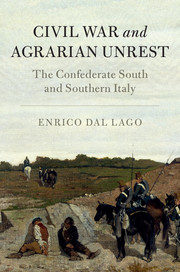Book contents
- Civil War and Agrarian Unrest
- Cambridge Studies on the American South
- Civil War and Agrarian Unrest
- Copyright page
- Contents
- Maps
- Acknowledgments
- Abbreviations
- Introduction
- Part I Inner Civil Wars and National Crises, 1860–1863
- Part II Civil Wars and Social Revolutions, 1862–1865
- Conclusion
- Bibliography
- Index
- References
Bibliography
Published online by Cambridge University Press: 23 February 2018
- Civil War and Agrarian Unrest
- Cambridge Studies on the American South
- Civil War and Agrarian Unrest
- Copyright page
- Contents
- Maps
- Acknowledgments
- Abbreviations
- Introduction
- Part I Inner Civil Wars and National Crises, 1860–1863
- Part II Civil Wars and Social Revolutions, 1862–1865
- Conclusion
- Bibliography
- Index
- References
Summary

- Type
- Chapter
- Information
- Civil War and Agrarian UnrestThe Confederate South and Southern Italy, pp. 405 - 438Publisher: Cambridge University PressPrint publication year: 2018



